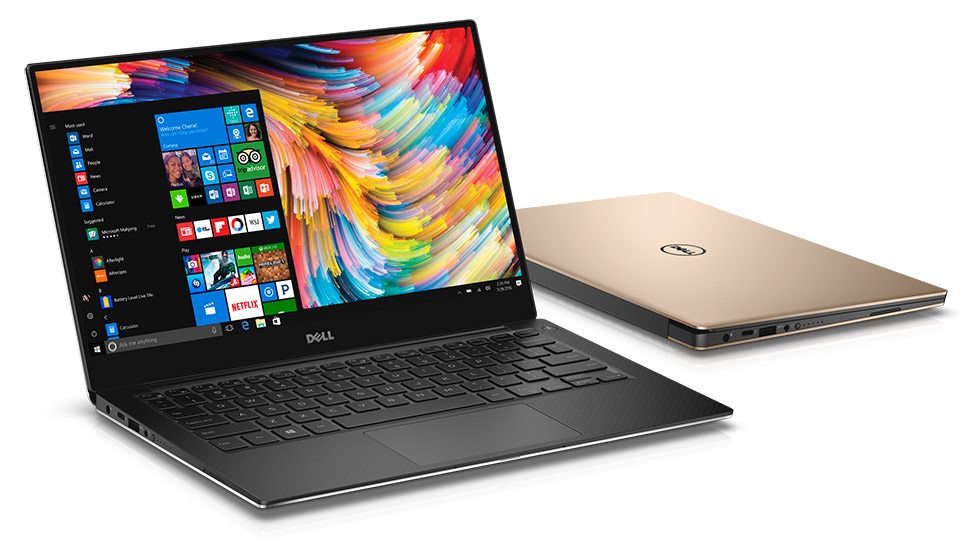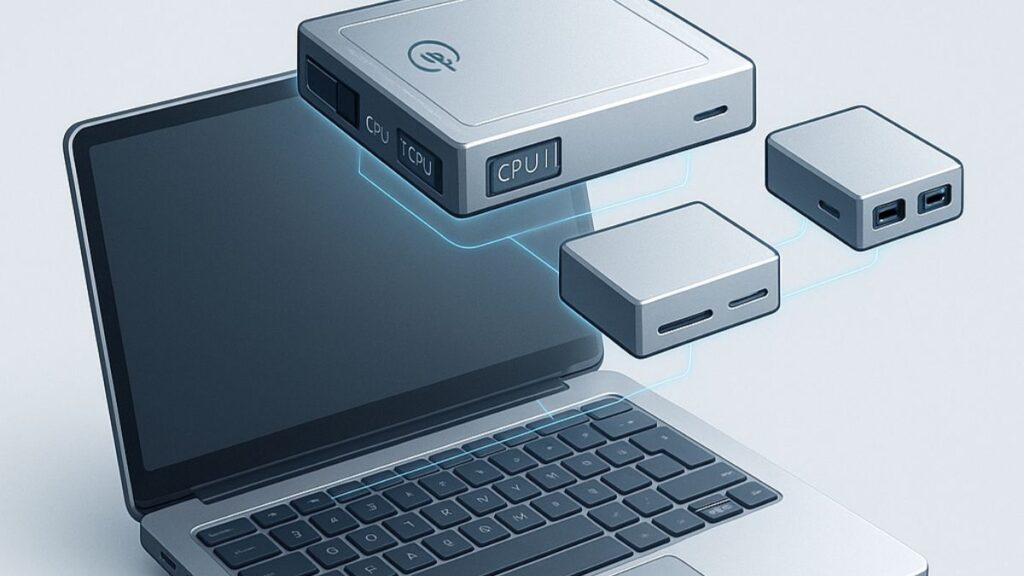My work provides regular opportunities to test notebook PCs and to consider how vendors are faring in terms of competitiveness, creativity and design. Over the past half-decade, a strategic shift that began with Dell’s 2012 introduction of the XPS 13 enabled the company to revitalize its entire portfolio. Testing the latest generation XPS 13 leads me to believe that Dell’s efforts in notebook innovation continue on-track.
Enter Dell’s XPS13
Remember that the year before the XPS 13 launched, the Wintel PC market was in a state of shock partly due to two Apple products; the Macbook Air launched in 2009 and the 2010 introduction of the iPad. Both were miles apart from conventional notebooks to the point that then-CEO Steve Jobs declared that the “post-PC era” had arrived.
Add in how PC makers and their partners were struggling with the global financial crisis and the market was set for disruption. That didn’t mean that an industry selling about a million PCs per day was throwing in the towel. Intel and others went all-out with new components, pricing schemas and promotional efforts, including the “ultrabook” campaign that aimed to inspire OEMs to new, innovative heights.
The first generation XPS 13 was Dell’s first ultrabook but earlier notebooks, like the Studio and Adamo showed the company was already shifting gears. The XPS 13 took a considerably different, more adventuresome tack than products designed to simply copy Apple. For example, the XPS 13 was a 12 inch form-factor with a 13.3-inch 1366 x 768 display—the same size and resolution Apple used in its 13-inch Air.
Dell’s pioneering use of carbon fiber allowed the XPS 13 to be lighter and run cooler than many other ultrabooks. Finally, while the company obviously focused its energies on Windows-based solutions, it also offered an Ubuntu Linux-based “Developer Edition” XPS 13 through its Project Sputnik program.
In other words, Dell wasn’t aiming merely to ape the MacBook Air but to surpass Apple in terms of product sophistication and quality. That is the goal the company has pursued and demonstrably achieved since 2012 to the point that outlets like PC World referred to the latest model as “the one that’s being copied by everyone.”
The XPS 13 today
I’ve reviewed two previous Dell XPS 13 generations: the original 2012 L321X model and the 2015 9343 model. The new evaluation unit that Dell sent me is a high-end XPS 13 9360 model with Intel’s 7th gen Core i7 “Kaby Lake” processor, 16GB of RAM, 512GB PCIe SSD and 3200X1800 QHD+ Infinity Edge touch display. Dell launched one more model at CES this year: the new 9365 2-in-1 which utilizes a “Kaby Lake” Core i7-7Y75 CPU with passive cooling and offers a flexible hinge that enables it to fold over into tablet mode.
The system includes a Killer 1535 WLAN card (with features designed for gamers) and a 60WHr battery (an upgrade from the previous gen XPS 13’s 56WHr batteries). Dell also provided access to its Premium Support which the company says is the industry’s only consumer service combining automated support with both 24×7 access to expert technicians and onsite service for unresolved issues.
The new system was flawless on start-up (which takes about 15 seconds) offering the same responsive keyboard and glass-smooth trackpad I was used to in the 2015 model. Launching most applications results in little lag time—not surprising with the latest Core i7 processor and substantial 16GB of RAM. That also makes browsing with 10-plus open tabs a breeze, and photo and video applications a pleasure to use.
The 2015 I tested and the new system both offer the same 3200 x 1800 display resolution, which is great for working with or viewing photographs and video. It is also light years beyond (5X+, in fact) the original L321X model XPS 13 I tested in 2012. Dell’s InfinityEdge display with its remarkably tiny bezel instills a touch of design class that competitors either can’t or have chosen not to emulate.
Along with a Thunderbolt 3 (with USB C support) port that replaced the mini-DisplayPort on earlier systems, the new XPS13 offers two USB 3.0 (5Gbps) Type A ports (one with nifty PowerShare functionality), a headphone jack and SD card reader. I mention this as a practicality since some vendors (Apple, in particular, in its new MacBook Pro) have abandoned both.
Those vendors may believe themselves forward thinking but making USB 3.0 available only with the addition of a dock or dongle will pain millions of customers with USB 3.0 based peripherals. Dropping the SD card reader seems especially tone deaf on Apple’s part when one considers the number of professional and semi-pro photographers who are MacBook fans. In any case, Dell deserves kudos for keeping USB 3.0 ports in this XPS 13 generation.
While the new system’s battery life is excellent, the Core i7 processor and QHD+ display draw more power than XPS 13s with Core i5 and i3 CPUs and lower resolution FHD AG (1920 x 1080) displays. It isn’t an issue for me but battery-concerned or constrained shoppers should consider those models. The Dell Power Companion, an optional backup battery for the XPS 13 is also handy.
Wrapping-up, here are a couple of thoughts on Dell’s Premium Support services; Offering consumers the same diagnostic/onsite repair options that are available for workplace-focused Latitude solutions shows that Dell understands that the lines between home/office notebooks are as thin as the bezels of InfinityEdge displays. Bottom line: clients need the services they need, consumer and pro XPS 13 owners included. Dell’s Premium Support offers exactly that.
Final analysis
This all sounds great but does the new Dell XPS 13 have any shortcomings? Some reviewers have dinged it as an “incremental upgrade” and that assessment is partly accurate. Lab tests suggest that with Intel’s Kaby Lake chips and other component enhancements, the new XPS 13 delivers 10 percent to 20 percent improvements in some performance metrics. That may not entice recent XPS 13 buyers, but these improvements and pricing options should inspire owners of earlier systems to consider the new models.
Other reviews have noted that the webcam’s position (under the lower left corner of the display” makes video conferencing a bit awkward. But to me that qualifies as a minor issue, at best, and part and parcel of the display design. Given a choice between Dell’s elegant InfinityEdge and a top bezel wide enough to accommodate a center-positioned web cam, I’ll take the former.
From the looks of recent market research many others feel the same way. IDC’s most recently released Worldwide Quarterly Personal Computing Device Tracker noted that during Q4 2016 Dell shipped just over 11 million notebooks and desktops worldwide, marking an 8.2 percent improvement in year-on-year sales. That was the best performance among PC makers, and IDC also found that Dell’s business grew in every global region thanks to strong notebook volumes and positive desktop sales.
Dell’s new XPS 13 highlights why the company is prospering while its competitors struggle. Creating solutions that appeal to both professionals and consumers, and continually upgrading them with new technological innovations has resulted in a portfolio that delivers exceptional customer satisfaction and commercial success. Dell’s new XPS 13 is clearly the best examples of this particular line but the view ahead from the InfinityEdge looks remarkably clear and expansive.
- Dell Concept Luna – Inspiring Sustainable Innovations with Circular Design - December 21, 2023
- AI Alliance: IBM, Meta, Dell and 50+ Founding Partners Pursue Open, Transparent and Safe AI Innovation - December 13, 2023
- Dell Technologies: Creative Partnering = GenAI Innovation - November 30, 2023



